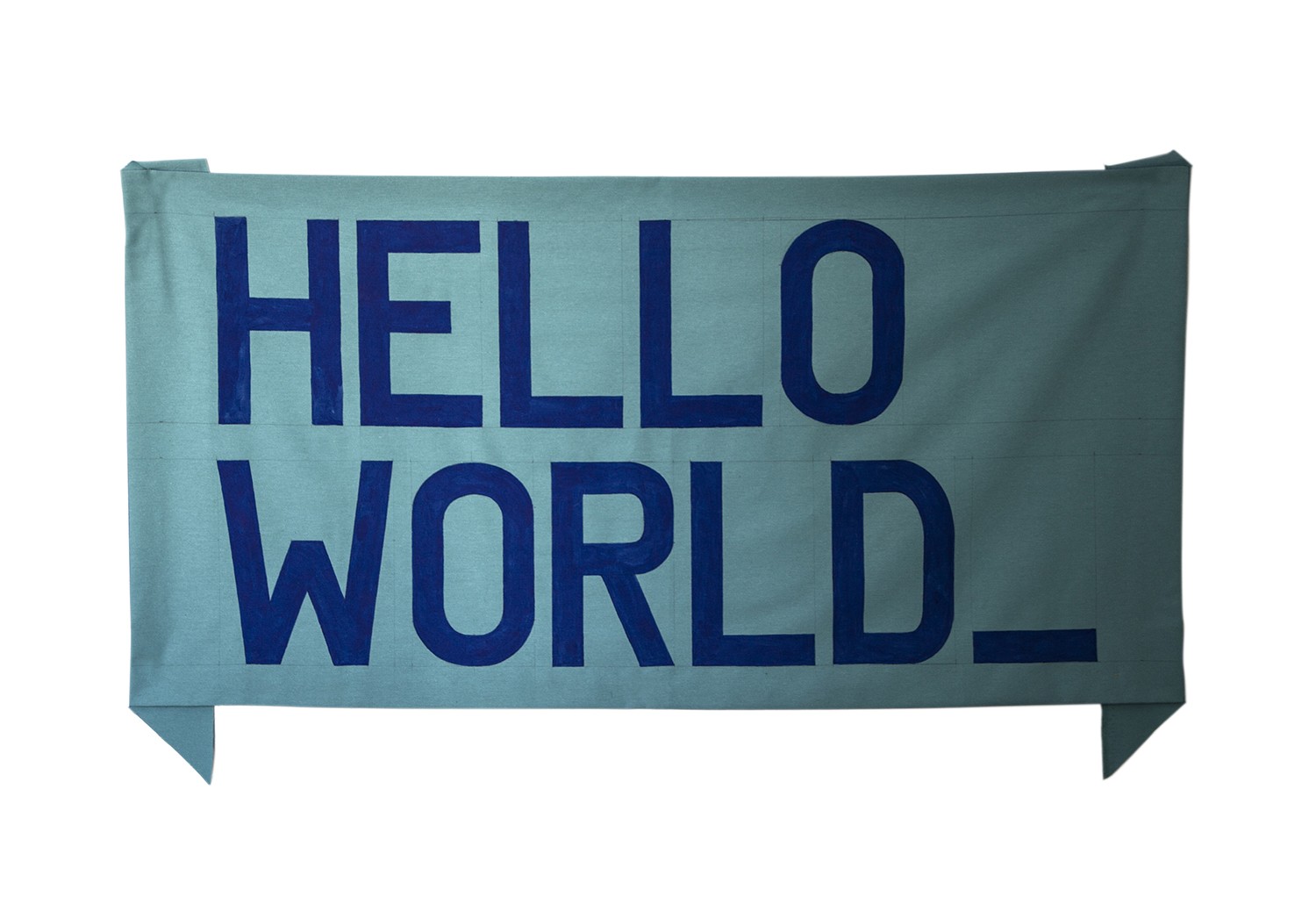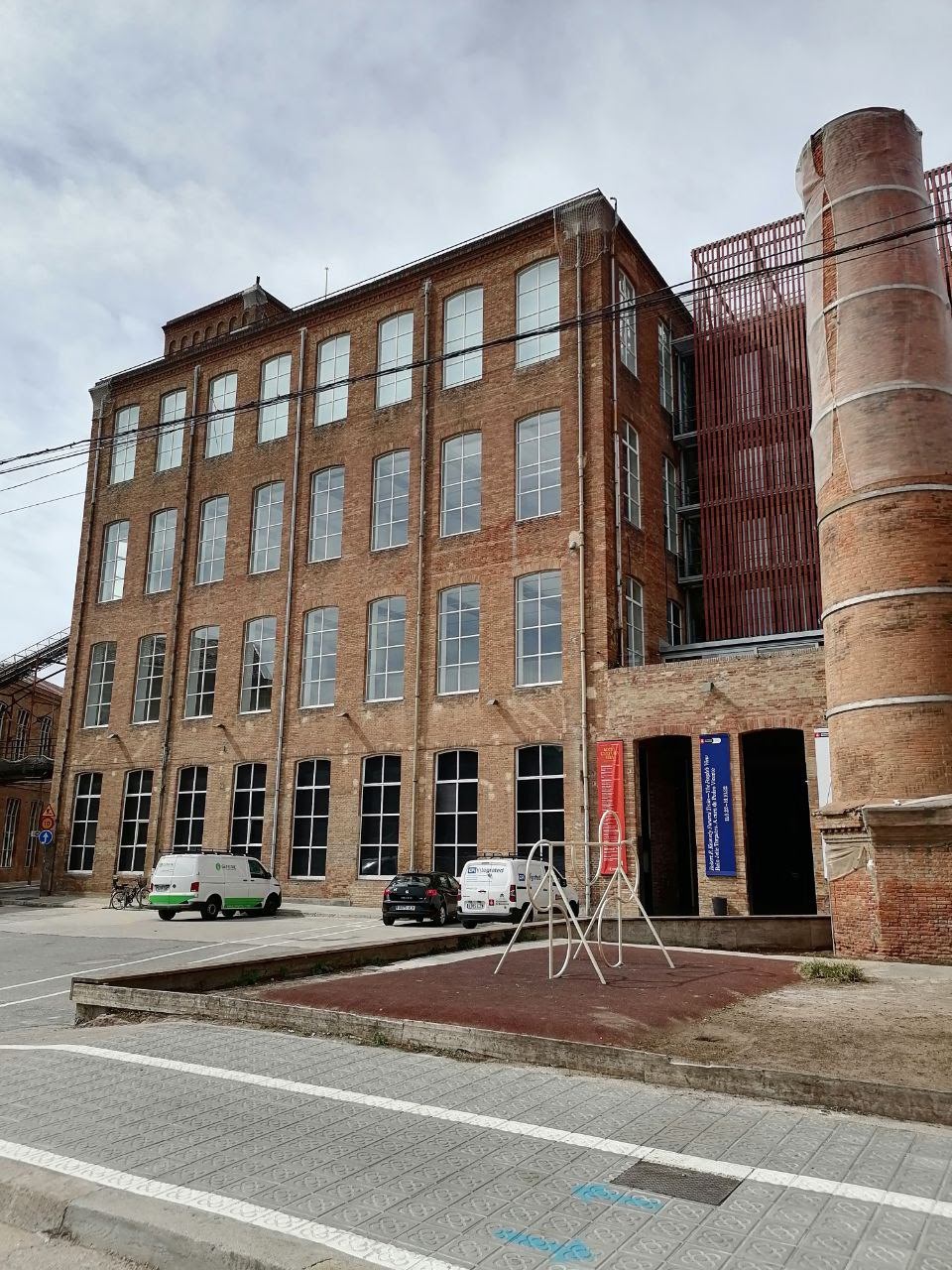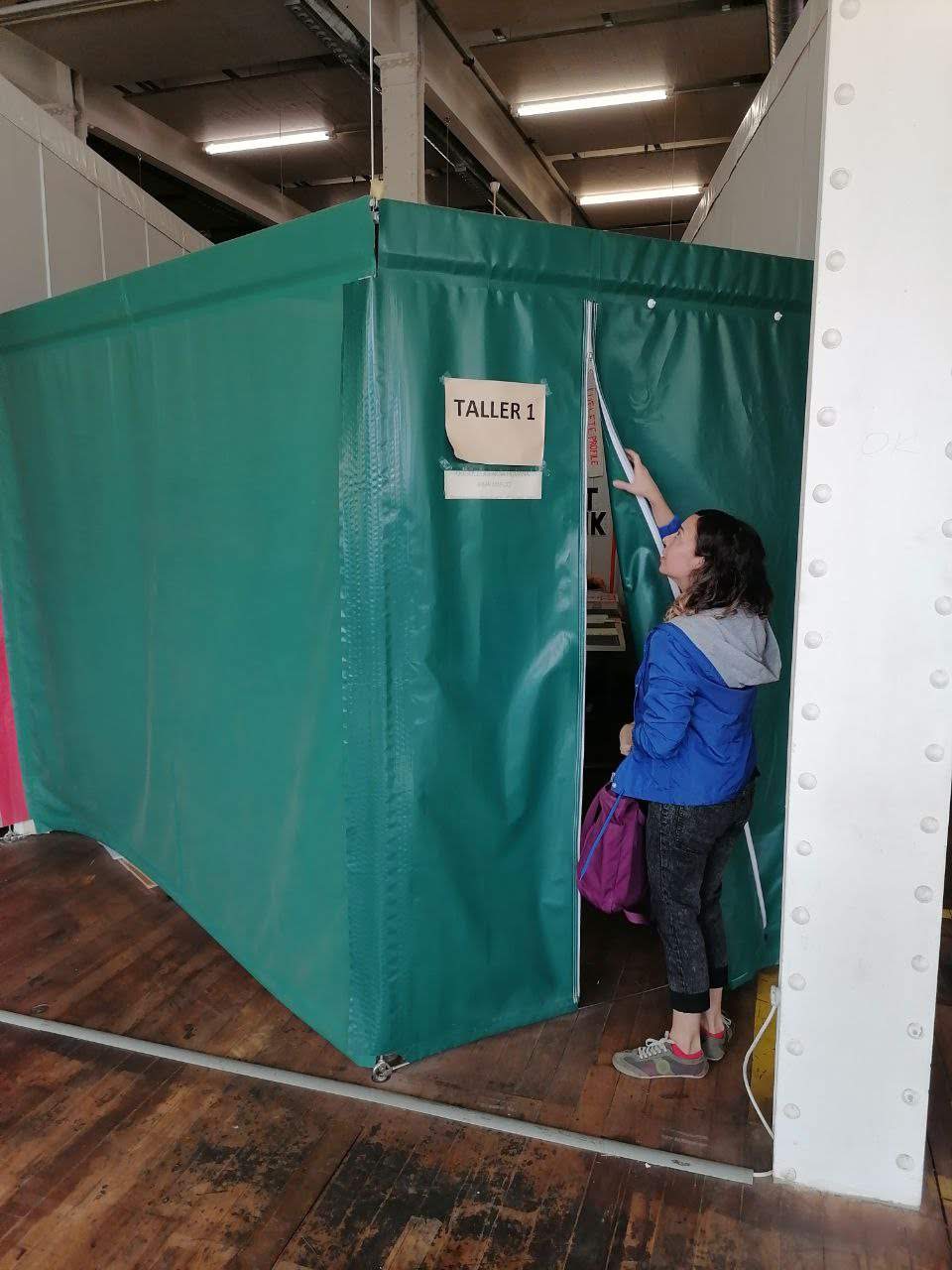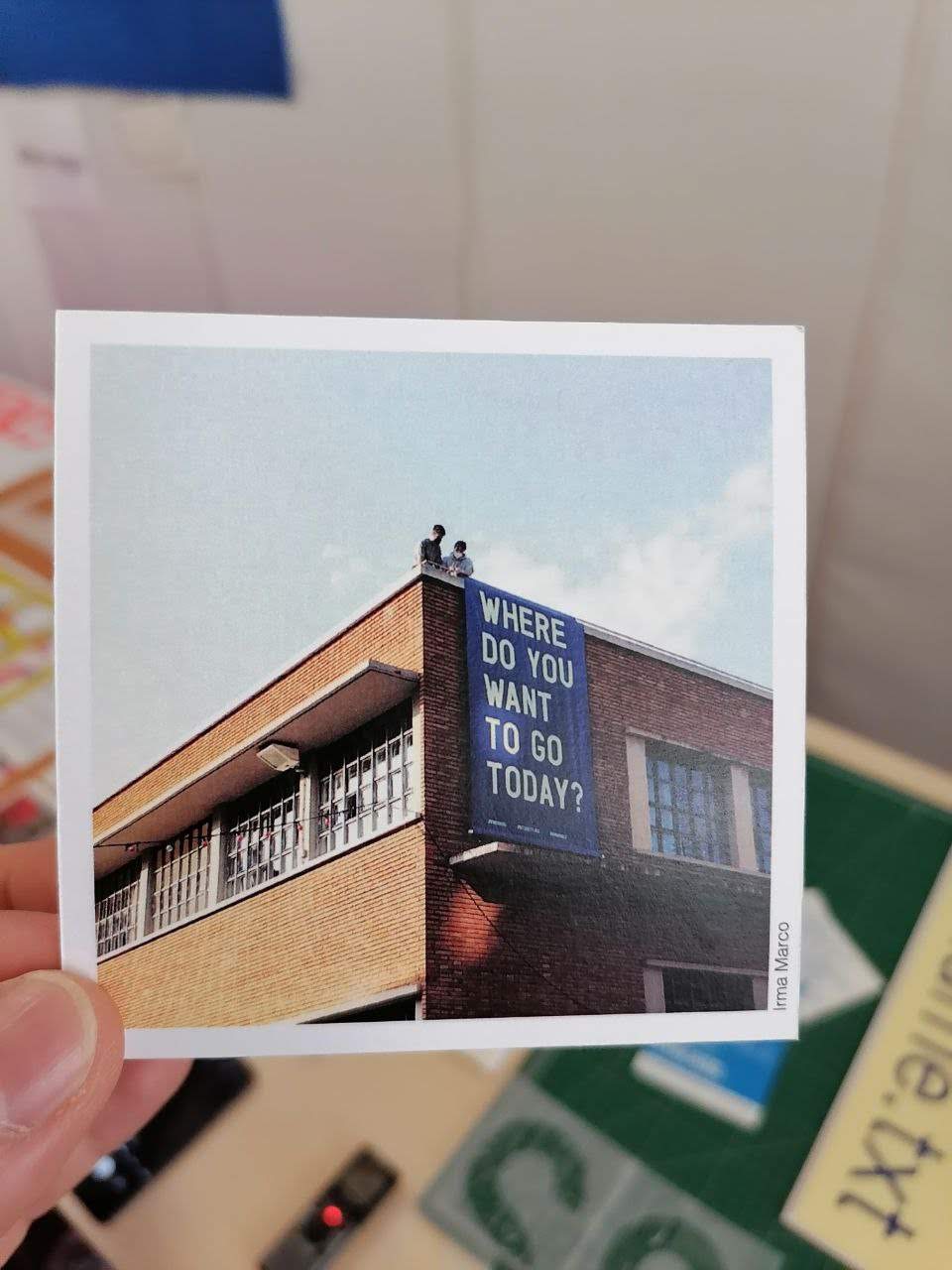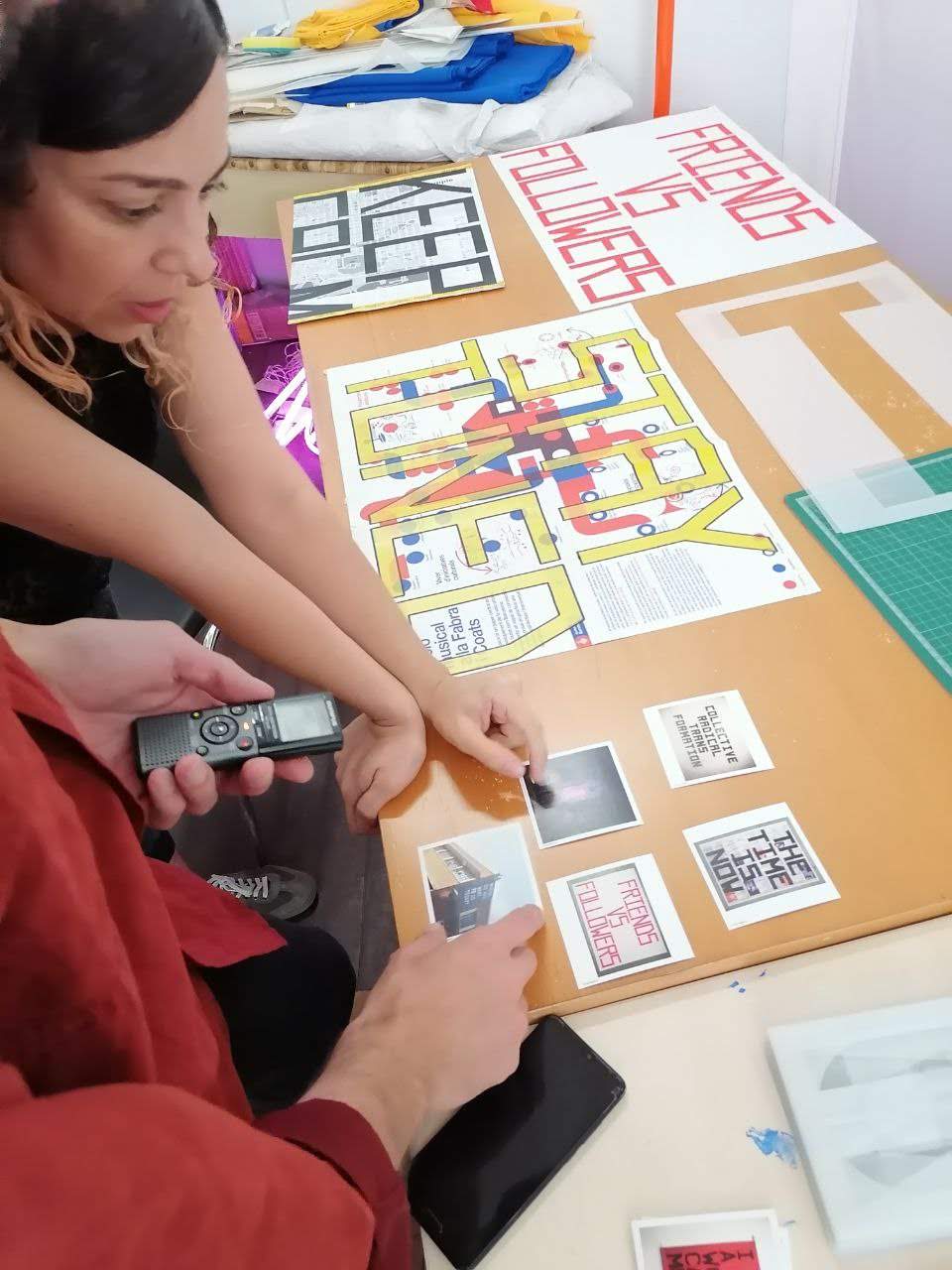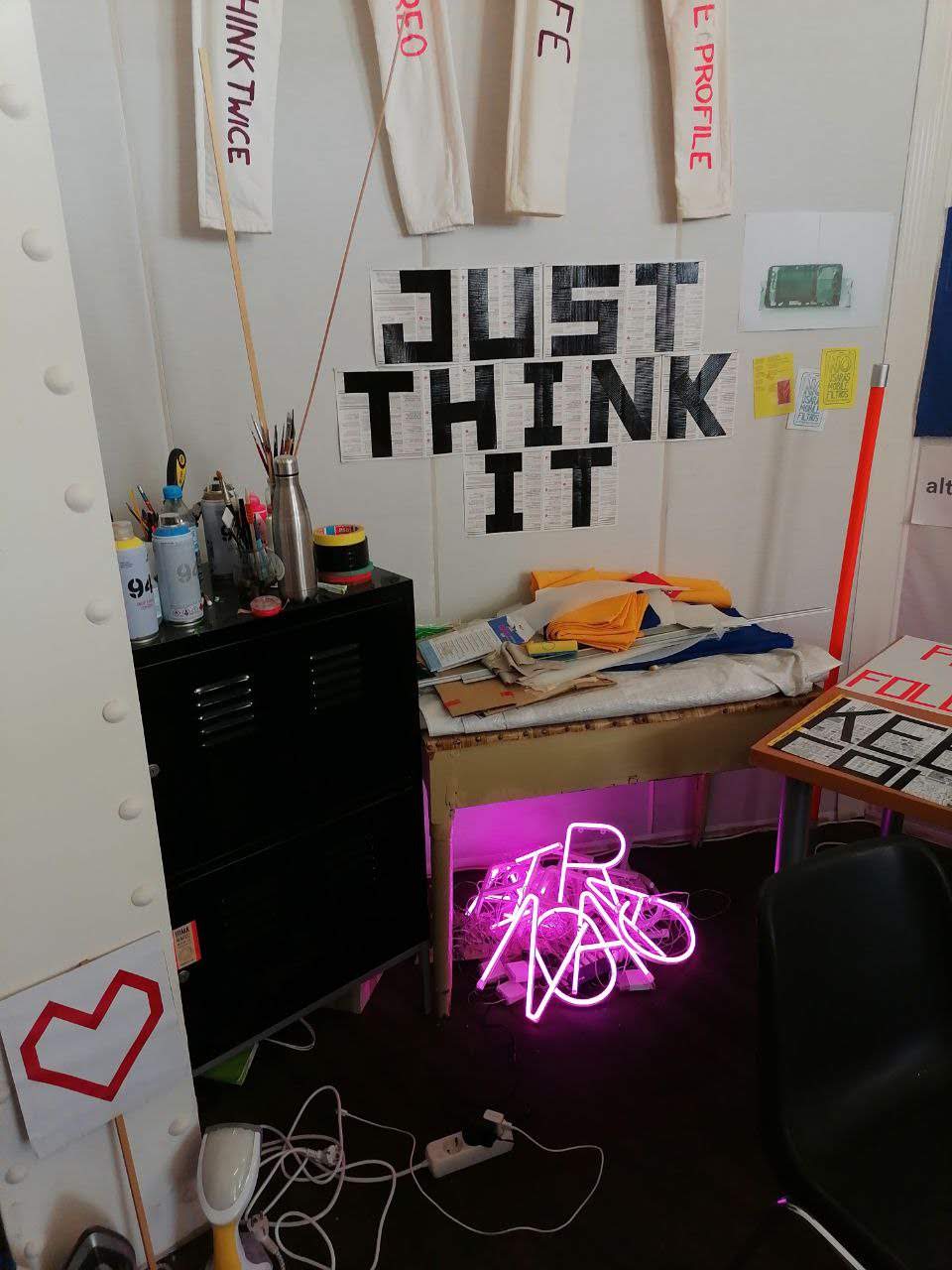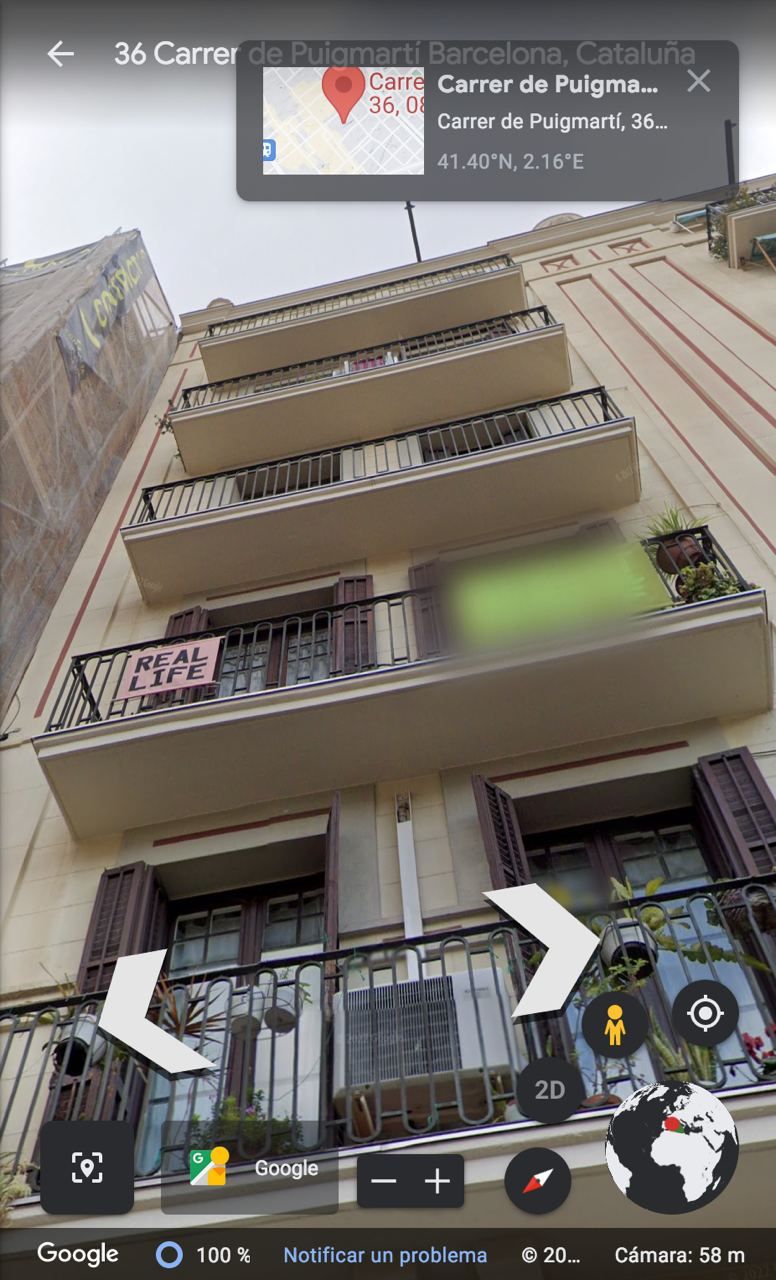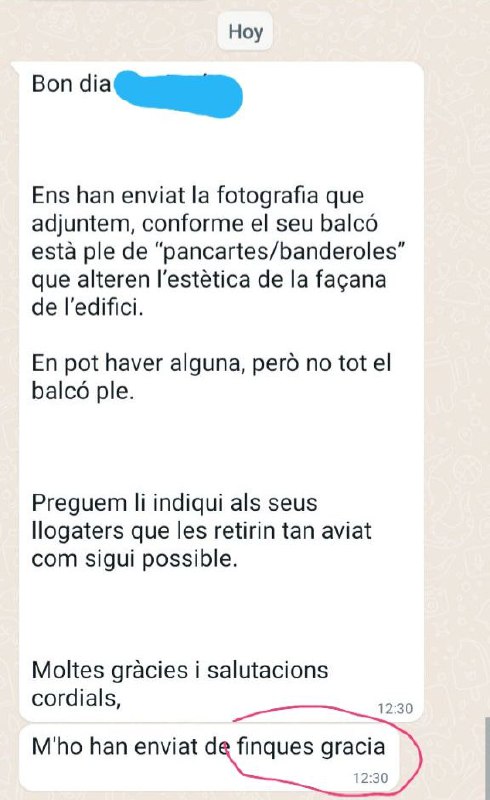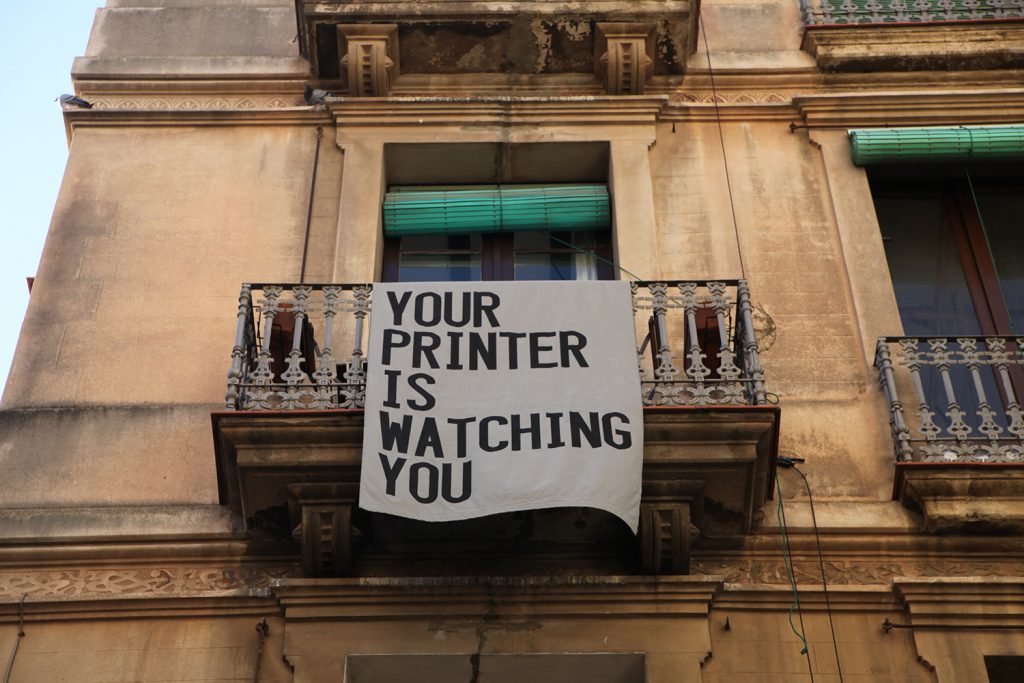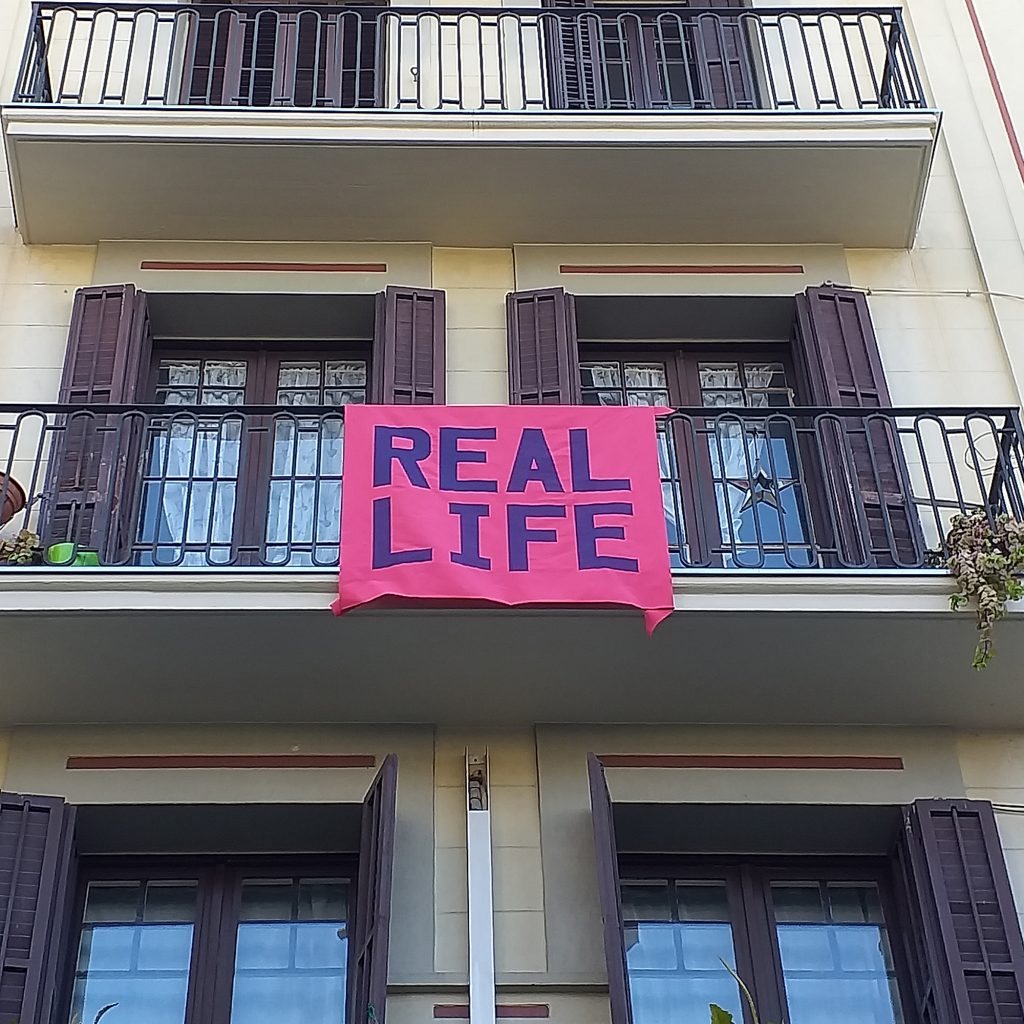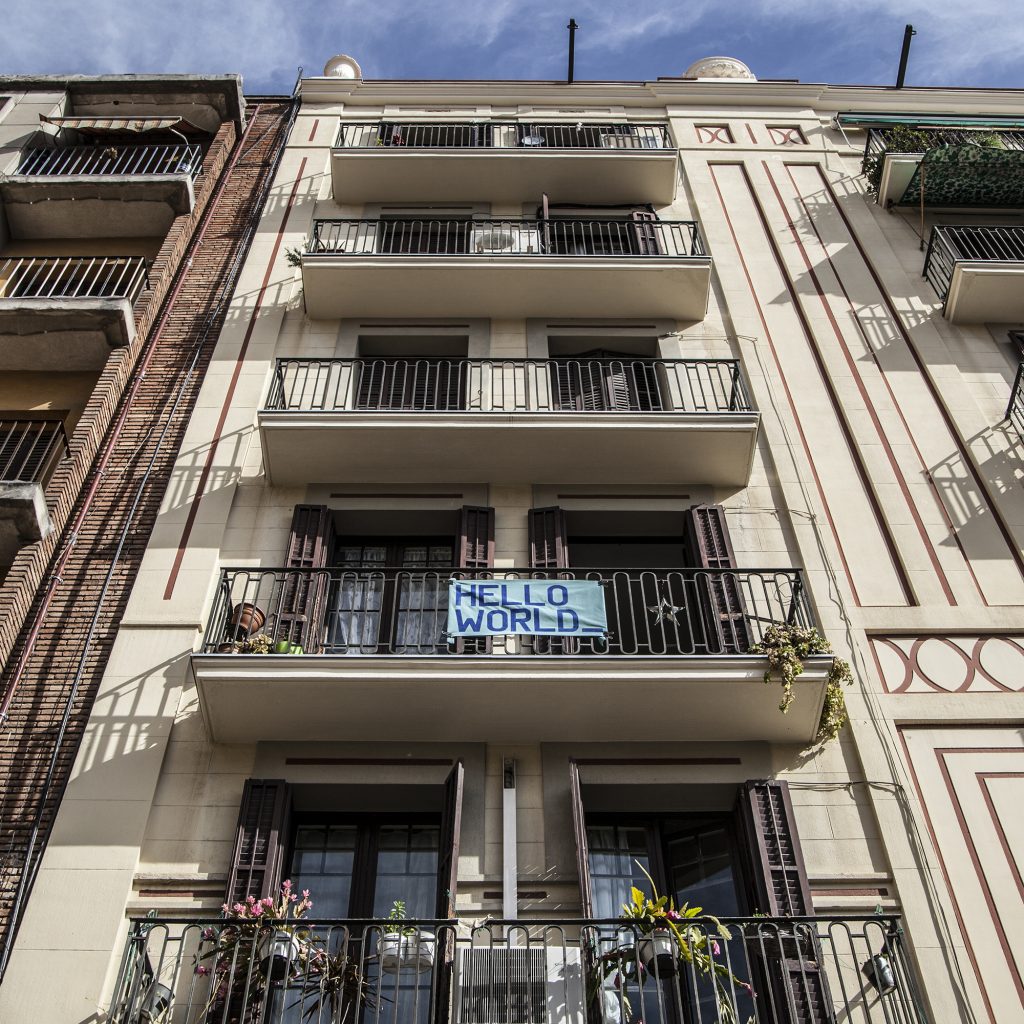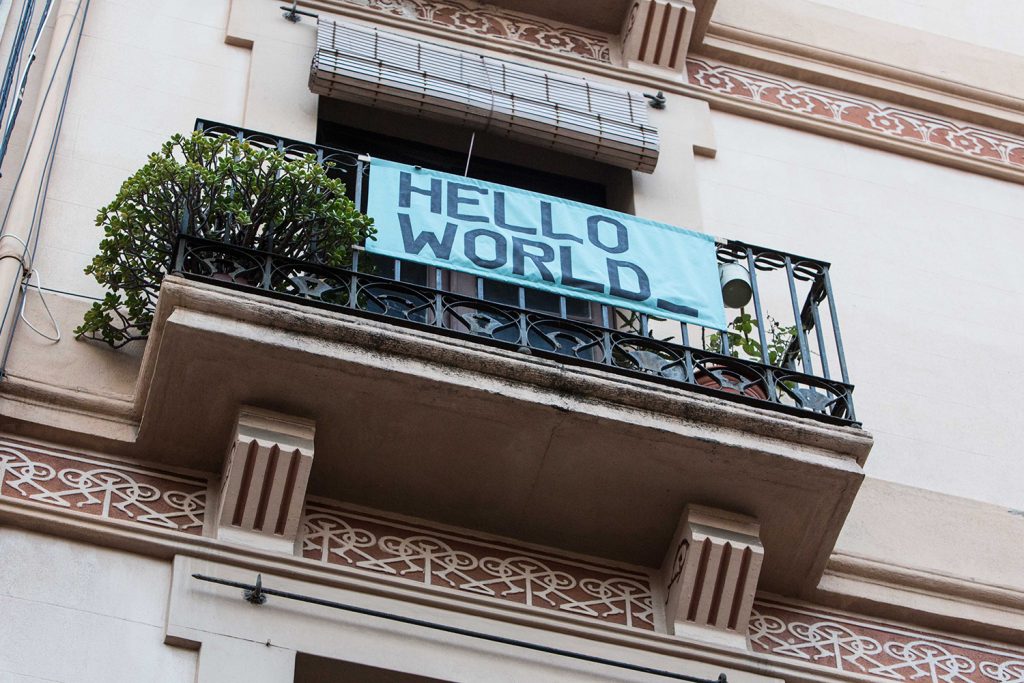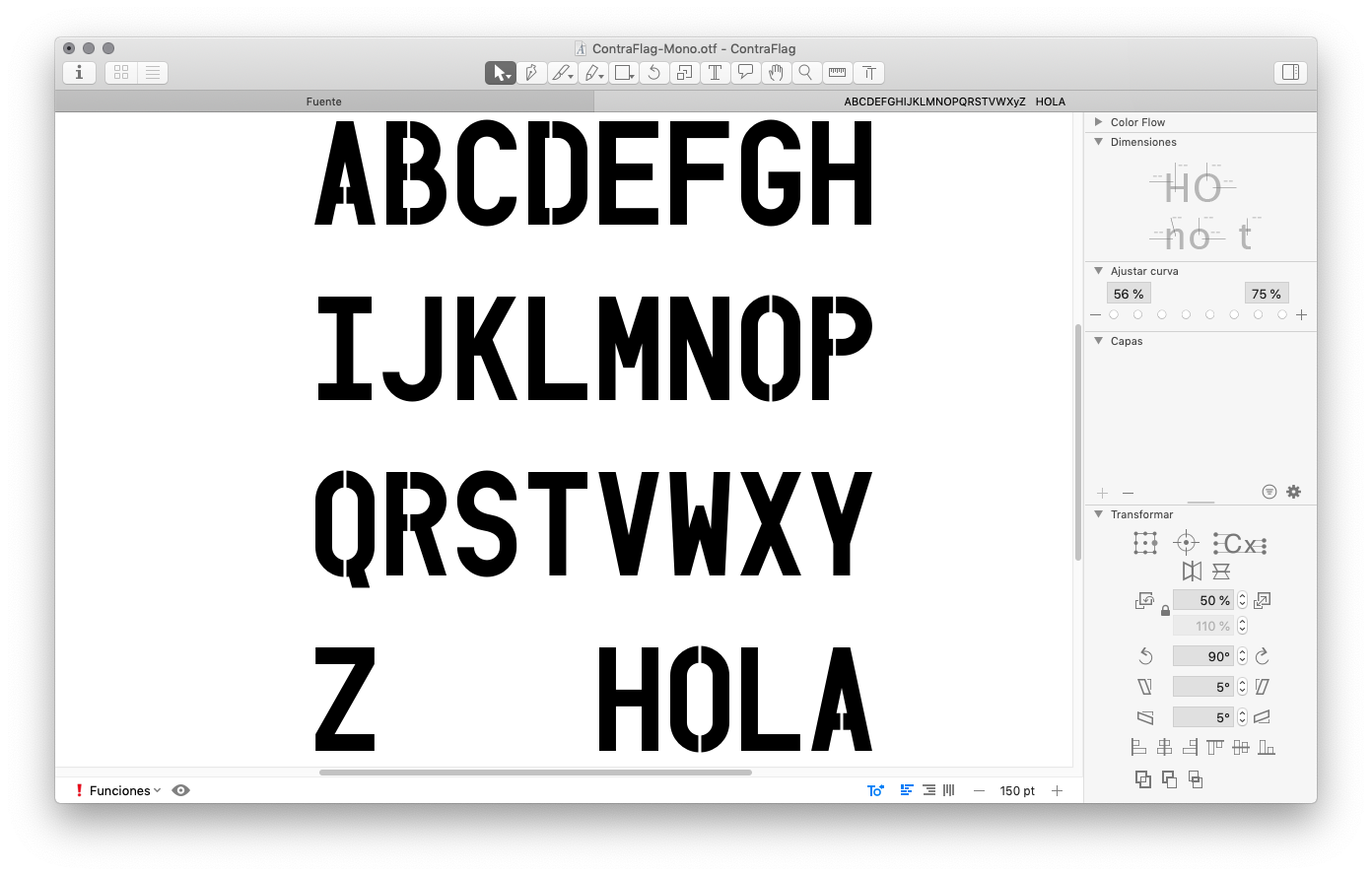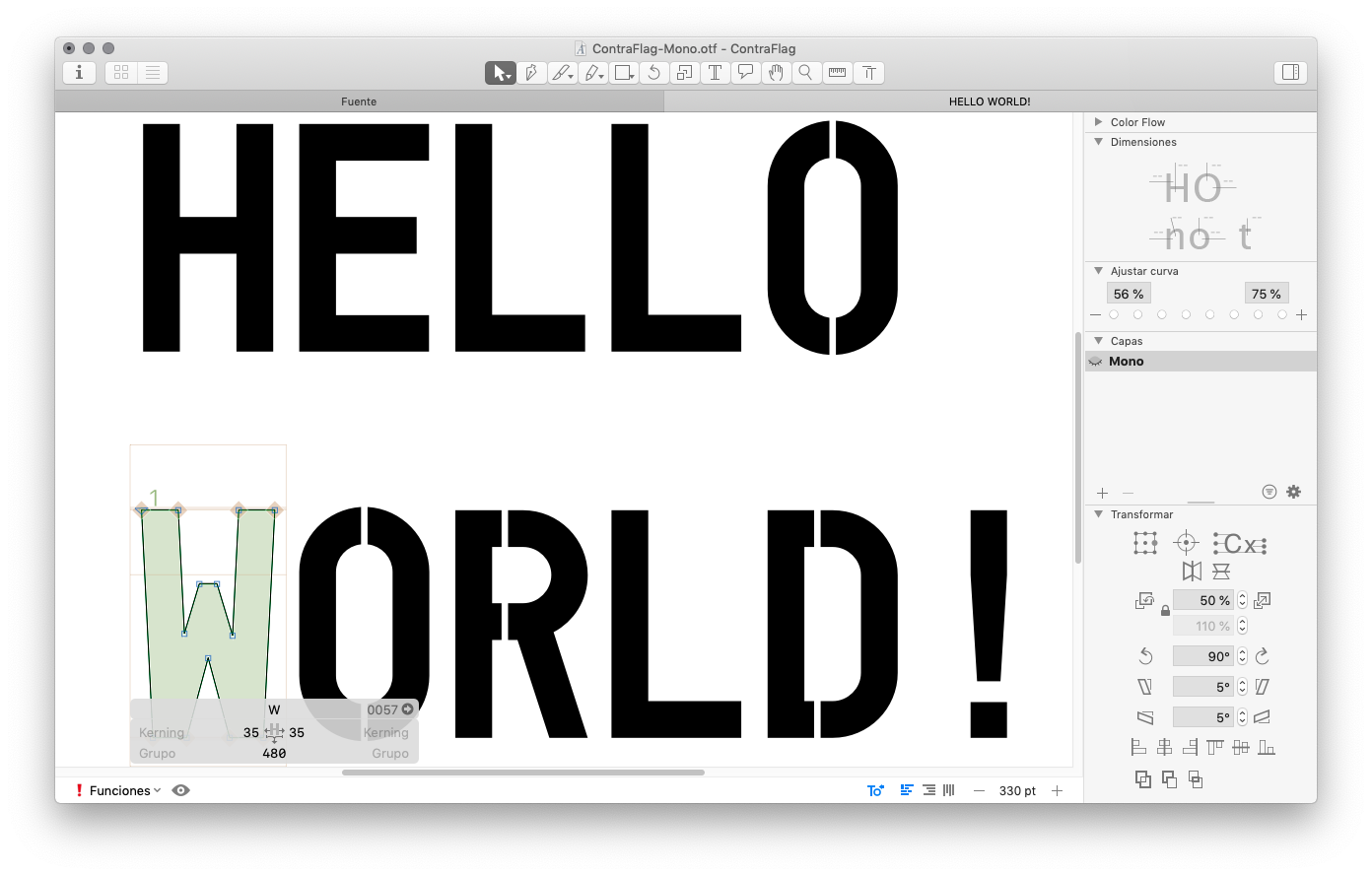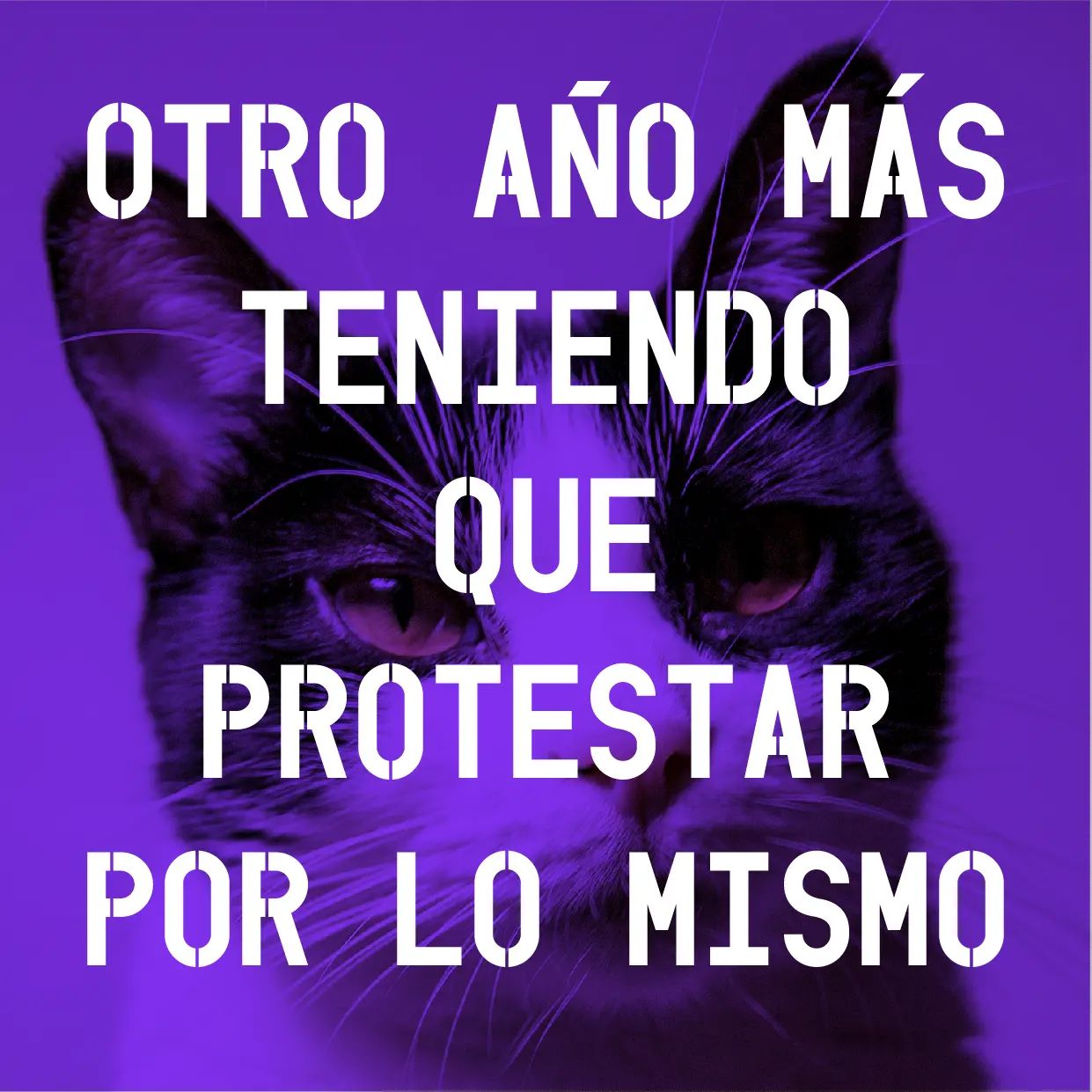Hello World
An interview with Irma Marco
Barcelona 2022
While visiting Barcelona, we stopped by for a chat with artist and designer Irma Marco.
A few months ago, I was in Barcelona to see some old friends. It seemed like a good opportunity to make some new friends as well. One of the people I wanted to meet was Irma Marco, who I was familiar with from social media, especially her #internetflags project on Instagram. I asked if I could drop by her workshop and she kindly accepted, so I went there accompanied by David Súid.
Her workspace is located in a former textile factory called Fabra y Coats. First opened in 1903, it was the first factory to manufacture cotton thread in Spain. In 2012, it was reopened as a contemporary art center, and it currently houses Irma's workshop: a 2x4 meter area within this giant industrial building. The space feels alive with half-finished pieces and designs piled up all over, which only she could hope to understand. She also has works on display for herself that were once shown for others. Here, I was able to watch her think through and develop her ideas.
Irma is a mix of designer and artist. Being a designer helped her understand how the pieces are made, and she developed her artistic skills to delve more deeply into ideas that interest her. The #internetflags project sums up this career path. She told me that she happened to have just bought a bunch of fabric and paint at the start of the lockdowns. These are the sort of coincidences that bring me joy. Those materials would form the seeds of a powerful project about the way we connect with the internet and the world.
#internetflags (2020) is a series of over 30 flags with messages written in acrylic. These cloth flags are hung from the balconies of neighbors who agree to allow them to be used as a platform for public communication. This raises the question, is a balcony a private space? Or is it public? We share Irma's view that it is a hybrid space. She defines it as an in-between area, which cannot be defined as solely public or private. This becomes even more noticeable when it is used to showcase messages questioning the status quo. Irma's work has been censored on Google maps, a decision she calls arbitrary. Google maps censors her project, but it will not censor flags with much more inflammatory political overtones. In the context of the city of Barcelona, balconies constitute political spaces, in particular when displaying the flag of Catalonia or the Kingdom of Spain can signal your stance for or against the independence of the territory. You can see entire blocks covered with flags, letting you know where your neighbors stand on the issue.
The power of this project is evidenced by the number of times she has been asked to take down flags from balconies because it has been seen as using the space to convey a personal message that the community does not agree with. Likewise, some neighbors are extremely careful in choosing the messages they agree to hang on their balconies.
The #internetflags project has two predecessors: Elsewhere (2018) and Just think it (2019), in which Irma also displayed messages on flags. These projects were key to developing her signature style, and they acted as the first steps in the creation of the fonts she uses to design the flags.
Regarding the lettering on the flags
Irma uses very simple materials: fabric, paint and letters. The evolution of the shape of the letters takes place in several stages. The first stage involves using adhesive tape to design-write the characters. These designs are the result of the proportions of the tool that is employed, the same tool that gives them their width and scale. Her letters are close in shape to the DIN family, a geometric / grotesque font designed for use in industrial production, since a typeface based on geometric drawing was easy to reproduce through lettering. This is most likely the reason Irma decided to go with that style of font.
The second stage involves using a 3.5cm ruler, with the same method of execution. The third stage consists of the systematization of modules. The fourth stage revolves around the stencil design before eventually digitizing the entire process to produce a font. The decision to design a digital font was made due to a time factor in the reproduction process. The systematization and digitization of the letters allows for more flag designs in less time, especially when scaling up to canvases of several meters that need to be painted by hand, which greatly reduces the workload.
What do these flags do?
The origin of the phrase "Hello, world" in programming circles is attributed to Brian Kernighan, who used this phrase as an example that became widely reproduced in the digital world. It is likely that most people who have learned to code have used that phrase as an initial exercise in programming.
Here you can find a series of ways to program Hello World.
Irma chose this phrase because her #internetflags project focuses on the digital colonization of all of us, and what better way to start than with a greeting?
Selection of photos and phrases from the Hello World project flags
Hello world
Hola mundo
Where do you want to go today?
¿A dónde quieres ir hoy?
Your printer is watching you
Tu impresora te está viendo
Tú, rodeada de red, eres
You do not exist anymore
Tú no existes más
Dark side of social media
El lado oscuro del social media
Els mòbils fun la vida més avorrida
Los móviles hacen la vida más aburrida
Clouding
Nublando
Everything is not connected
Todo no está conectado
I hear a new world calling me
Escucho a un mundo nuevo llamándome
Real life
Vida real
Real people
Gente real
Tu mano
Irma says that the internet used to be a wonderful place. I think it still has that potential, but we agree that its initial beauty has been stripped away little by little through the expansion of web-monopolies like Youtube and Facebook, which render the virtual landscape increasingly monotonous. From her, I learned that the internet was first conceived as a communications system that could survive a nuclear warfare scenario. The system was democratized through the promise of streamlining communication that required a broader pipeline than, say, phone lines to deliver its message. It allowed us to interact with people who were far away, to seek information at any time without needing to wait for the library to open. It seemed to be a wonderful, decentralized system of communication.
During the recent global pandemic, it appeared that we had reached a new digital state, with the internet as a fundamental need. Many of our interactions were forced into digital spaces, seemingly without limit.
Bucking the trend, Irma chose that moment to greet her neighbors and start an in-person conversation with her neighborhood. She defines this impulse as the "urgency of the word", an urgency to preserve or resume a relationship with those who accompany us in our daily lives. It was only a matter of time before the messages made their way from her balcony to those of her neighbors, who wanted to have their own flags. Soon, a neighborhood-wide web was created, a rudimentary internet of hanging messages that expanded as more residents sought to join the network.
Takeaways from the visit
The trip to Irma's workshop presented us with an opportunity to collaborate in her work. David Suid is now programming a digital typeface that uses the current templates to generate his work. David divided the project into two stages, with the first one respecting the original monospaced-stencil form and a second proposing optical adjustments as a multi-spaced-stencil font.
These proposals will improve the methodology, mainly by saving time, since Irma's letters are currently digitized but not programmed as a digital font. As of now, the writing itself is a mechanical process of copying, pasting, resizing and composing.
Thanks to Irma for letting us visit her workshop! As a bonus, she brought us along for a visit to Oscar Nomen's workshop, which happens to be nearby.
You can see more of Irma's work on her website, Instagram and at her workshop in Fabra i Coats Carrer de Sant Adrià, 20, Barcelona, Spain.
